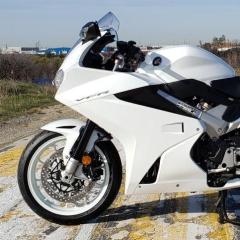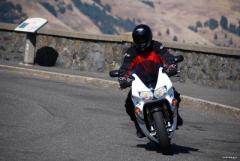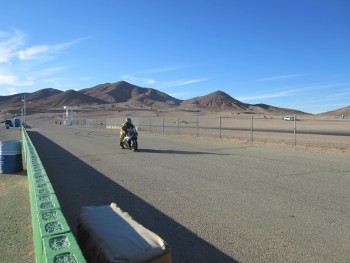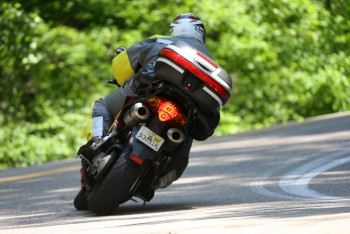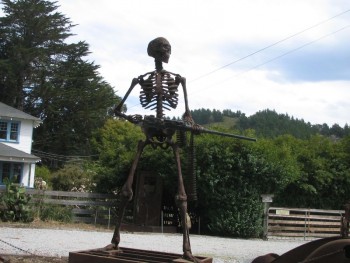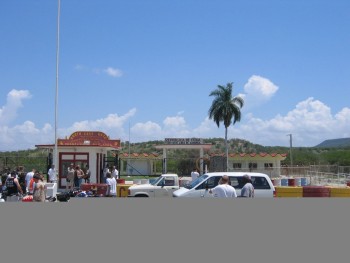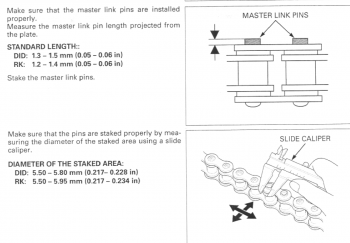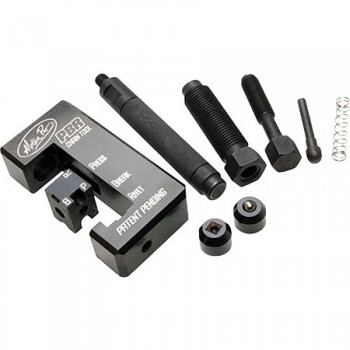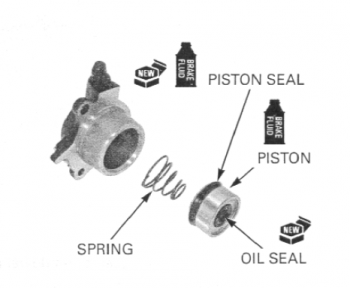-
Posts
234 -
Joined
-
Last visited
-
Days Won
3
Havagan last won the day on May 19 2018
Havagan had the most liked content!
About Havagan

Profile Information
-
Location
Tampa, Florida
-
In My Garage:
2002 VFR800
2012 Ducati 848 SE
Recent Profile Visitors
11,671 profile views
Havagan's Achievements
-
I haven't posted in a while, but guess what I'm doing today... http://www.vfrdiscussion.com/forum/index.php/topic/29737-how-to-replace-30amp-fuse-wires/
-
I used some JB Qwik Weld to add material to the surface of the lever where it meets the switch. One option should you need it later on. ;)
-

Radar Detector Indicator Lights -- Fun With Leds
Havagan replied to Havagan's topic in Modifications
You're too kind. I feel really lazy about the LEDs because I'm still not finished with them. Too busy installing the volt meter and tearing down the Ducati carbs (AGAIN!) -

Radar Detector Indicator Lights -- Fun With Leds
Havagan replied to Havagan's topic in Modifications
Even I don't have that horrible of taste in furniture. That's a place mat that I use to keep from scratching the kitchen table! Yeah, I have no idea what I'm doing. I spent a lot of time reading and bugging a knowledgeable friend to come help me out. I had to feed him but it was worth it. -

Radar Detector Indicator Lights -- Fun With Leds
Havagan replied to Havagan's topic in Modifications
I finally got around to building a circuit for my radar detector alert LEDs. The original circuit design was based on the Escort's "Smart Cord" and drives only a single LED. I found that that circuit didn't provide enough voltage to drive 8 5mm 3.2V LEDs at full brightness so a new circuit design was in order. The original circuit used a constant 5V power source and a second line that produced voltage spikes to trigger a 3N2904 transistor that powered the LED on. The new circuit uses 12V to power the LEDs with ground running through a 3N2904 transistor. There is a second 3N2904 that is powered by the 5V line and triggered by the second line that produces voltage spikes. I currently have the LEDs wired into the bike and connected to the radar via the 3.5mm mono audio jack on the x50 -- since I didn't want to have to rewire the LEDs I simply wired a female 3.5mm mono audio jack into the circuit so I can just plug the existing LEDs into my new circuit. Circuit Diagram: Circuit Mock-Up: Video of the Mock-Up In Action: So it looks like I've got the circuit working... now I just have to package it up nicely and get it installed on the bike. (But not until after my NC trip this coming weekend.) Paul -

Radar Detector Indicator Lights -- Fun With Leds
Havagan replied to Havagan's topic in Modifications
The Plasti-Dip on the windscreen came out great; I'm very happy with the results. -

Radar Detector Indicator Lights -- Fun With Leds
Havagan replied to Havagan's topic in Modifications
The LEDs are not perfectly in my line of sight (lower end of peripheral vision) but I'm hoping with bright enough LEDs and lots more blinking, it will be enough to alert me. The Marc Parnes product you're talking about runs off of the mono audio jack on the radar detector. This is how I originally had my LEDs wired up. The down side to this configuration is that the radar doesn't beep a lot at lower indicator levels -- so minimal flashing of the LEDs. Then, as the detection went to full strength, the LEDs didn't really blink much because the beeping was nearly constant. I'm hoping that my circuit will let the LEDs blink at a constant rate when ANY radar is detected regardless of how strong or weak the signal is. If, under additional real world testing, the LEDs are still too low, my circuit can still be used with an LED light strip that I could attach to the top of the windscreen. I'm really hoping I won't need to go that far. He's using an Escort x50 with an older generation Chatterbox X1 Bluetooth (not sure what phone he's using, but it's Android based). Figured I would post a few more photos. The LEDs are just stuck through 5mm holes that I drilled in the plastic triangle inserts under the windscreen. The fit is tight enough that friction is the only thing needed to keep them in place. The LEDs are soldered in parallel and, for anti-vibration and water-proofing, the entire back is filled in with high-torque RTV gasket maker. And the Plasti-Dip'ed windscreen: -

Radar Detector Indicator Lights -- Fun With Leds
Havagan replied to Havagan's topic in Modifications
My friends all use the HARD system, but I decided not to. * I can't learn much about circuits that way. * Too expensive. * Don't want more wires inside my helmet. * Don't want to deal with batteries. * Friend's HARD system interfered with his phone-to-helmet Bluetooth audio... and I like music while I ride. This setup will have one cable to the radar for me to plug in and that's it. I like simple. ;) -

Radar Detector Indicator Lights -- Fun With Leds
Havagan replied to Havagan's topic in Modifications
My tinkering continues. Gone are the red LED indicators.... Because real world use identified two issues: 1) The red LEDs are too dim for use in direct sunlight. 2) The LEDs, which were driven by the radar's audio alert, didn't blink at higher alert levels... they were just always on. Couple non-blinky lights with sunlight and they weren't very useful at high noon. To fix these issues I went ahead and upgraded the red LEDs to MUCH brighter white LEDs. I also taped up the underside of the windscreen to give the LEDs some shade. The electrical tape is just a temporary hack while I test different voltages to adjust the brightness levels of the LEDs -- the finished product will have the underside of the windscreen done in black Plasti-Dip. I'm also changing up the wiring so that the LEDs blink at a constant rate when the radar is alerting instead of having them powered by the audible alert. This means recreating the "Smartcord" for the Escort x50 (the Smartcord has an alert LED) and fidding with the voltages to run 8 LEDs instead of a single LED. I'm also wiring in a Hi/Low/Off switch so that I can change the LED brightness for day/night use because those super-bright white LEDs will probably blind me on pitch black backroads. Soooooo..... I started with a basic wiring diagram for the x50 that I found online and then dismantled an old (broken) smartcord that I had lying around to confirm the interweb diagram. Four resistors and one 2N3904 transistor and a 2A fuse are all that make up the $30 smartcord. I didn't want to just use a smartcord because I find it's too bulky, I don't need the mute button, and I wanted the hi/low switch option. Smartcord Updated wiring diagram with estimated resistors for 8 LEDs in parallel: The Escort x50 uses a standard four conductor phone jack (RJ11). My test mock up with all resistors and transistors in place. There is a power/ground (top red/black wires) and then the four wires that form the "smartcord" connection to the radar (red/green/black/yellow). Total cost so far is about $6 -- four resistors, one transistor, and a hi/low switch. Testing is good so far. The blue LED is the "power on" indicator and the red LED is the "radar alert" indicator and my voltage calculations appear to be good... 3.3V for the blue LED and 2.2V for the red LED. I did fry a good number of red LEDs which, I found out, are very very sensitive to over voltage. The blue and white LEDs took overvoltage like champs and just kept on chugging. Separately, I tested the hi/low switch to determine what resistors I needed to dim the bulbs (the white LEDs, for example, are nicely dim at about 2.6V)... but no pictures because it was late and I forgot. I won't get this thing wired into the bike for a few weeks but will post pictures of the final product when I do. Paul -

The Most Beautiful Thing I Have Ever Seen.... 2 Bros Full System!
Havagan replied to CandyRedRC46's topic in Modifications
You put that thing on your light colored carpet....... !!!!!!!!!- 26 replies
-
- full system
- race exhaust
-
(and 4 more)
Tagged with:
-
I know very little about electronic/electricity beyond what I was forced to learn while troubleshooting the blue connector issue on my VFR many moons ago. After wiring up the USB port last weekend, I decided to have some fun with LEDs. Taking a look at the Marc Parnes Visual Alert for the Escort Passport 8500 and finding a similar idea/writeup about making your own LED indicators on one of the other forums inspired me to try my hand at wiring up some LEDs for use on the VFR as an in-dash warning light system. Like most of these, the LEDs will be powered by the mono headphone jack on the radar detector. Since this is my first time playing with LEDs I had to get some basic supplies including a soldering iron (Sears, $8) and a couple bags of LEDs and resistors from eBay for $15 and then I started hacking. ... I used a 3V watch battery to test the LEDs before beginning soldering. And used some heavy plastic makeup applicators (donated by my wife) as the backing material to mount and solder two banks of four LEDs each. I wanted to have these lights mounted well within my peripheral vision and chose the two small black plastic inserts at the top of the windscreen as my mount point. I drilled four 5mm holes on each side and passed the LEDs through and mounted the plastic backing plate with glue. I may need to use a better adhesive -- we'll see how they hold up over time. Here's the finished product with camera flash and in the dark. My only real concern is how bright they are during the daylight but based on my eyeball testing it shouldn't be a problem. As with the mounting adhesive, time will tell! Paul
-
Check the outlet specs for confirmation. I installed a Blue Sea Systems Dual USB port that has a parasitic draw of only 15mA. http://www.bluesea.com/products/1016 Paul


